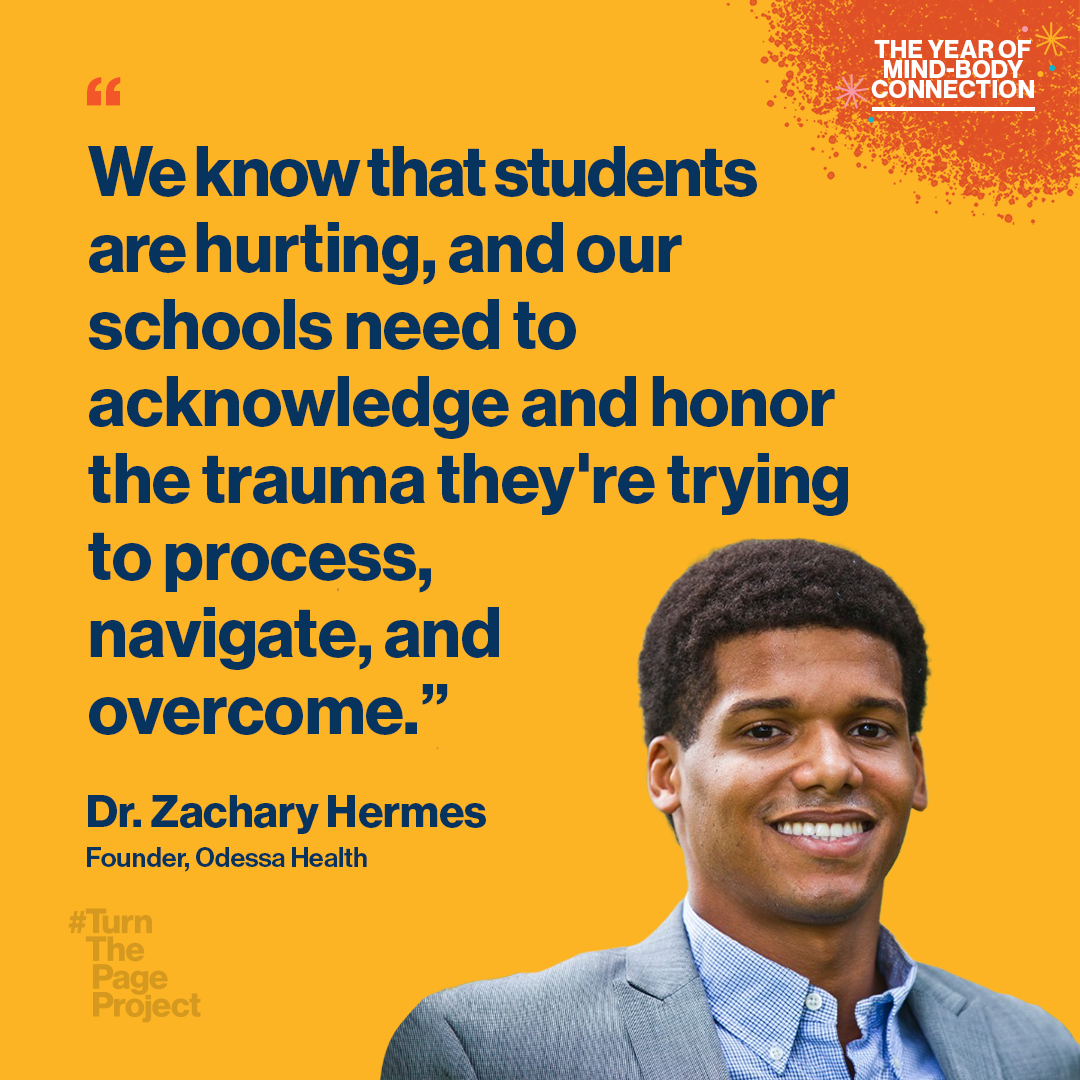Year of Mind-Body Connection


WE CAN’T BE HELD BACK by the traditional separation of pediatrics and education spaces if we want to find the most effective and impactful approaches. Behavioral health and social emotional learning are truly two sides of the same coin, and formulate the core to driving academic achievement as well as a fulfilling life.
It’s time for us to reimagine what this learning environment looks like. Not to tinker, not to modify, but to be willing to rethink the DNA of how we organize our schools.”
There’s a ton of data that tells us students with mental health or behavioral health issues perform much worse academically and are far more likely to face disciplinary action. But these challenges are not an inevitability. They are a response to the environment and contexts that students find themselves in. It’s time that we not only recognize the environment as a risk factor but think about it as a key component of nurturing.
Given that school is often the place that a student spends the most time, we have a profound opportunity to intervene and promote healthy skills and mindsets. The mind-body connection is more apparent, and evidence-based, than ever. We know that students are hurting, and our schools need to acknowledge and honor the trauma they’re trying to process, navigate, and overcome. Many communities, including those most vulnerable, have faced a generational trauma.

It comes down to culture and the vision for what a school looks like. We cannot slide back into the old ways we know are failing so many students and families. We have to be willing to leverage technology, evidence-based practices, and new systems of care that cross traditional boundaries to positively impact and empower this generation of students.
Organizational change is challenging, and the process has not always been welcome in education. We need to commit to saying, “We’re going to start on this path, but we don’t expect it to go perfectly the first time around.” We have to be willing to pilot, push boundaries, and work with often early-stage organizations articulating a new vision for our learning environments. We must create the space and partnership for that innovation.
Healthcare, too, is going through a transformation. The next generation of school-based health can and should center around a virtual model of care – enabling us to leverage more resources and capacity to deliver integrated student supports. It creates an opportunity to partner with community-based organizations on food assistance, housing, and social services. Building a community school on top of a digital and virtual infrastructure is a very new space, but it’s what the future must look like.
The pandemic has prompted us all to reflect on ways that we’re failing students. The key now is for leaders to have the humility and courage to say, “The time is now for us to reimagine what this learning environment can look like.” Not to tinker, not to modify, but to be willing to rethink the fundamental DNA of how we organize our schools.